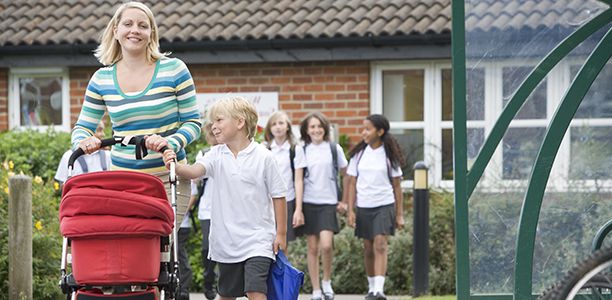Too many Australian children are not doing enough physical activity to maintain good health, a new report reveals.
As thousands of school children return to classrooms around Australia, leading health experts are urging parents and schools to help children become more physically active.
Report promotes walking & riding to school
A national collaboration of Australian experts has contributed to a report calling for all children to be supported to walk, ride or scoot at least some distance to and from school every day.
Active Travel: pathways to a healthy future has been endorsed by the National Heart Foundation, VicHealth, Parents Voice and the Australian Primary Principals Association.
The report urges governments at all levels to work collaboratively to enable children to be more physically active every day. It suggests improving the physical environments around schools and helping parents, schools and communities to support children to participate in active travel each day.
Over 70% of Australia’s children and 91% of young people are not meeting the national physical activity recommendation of 60 minutes physical activity every day. Lack of sufficient physical activity places children and young people at significant risk of developing diseases such as diabetes, cancer and heart disease. It also contributes to higher body weight. One quarter of all children and 29% of young people are overweight or obese.
Unless we become more active, Australian children will live shorter and unhealthier lives than their grandparents.
“As a nation, we have stopped moving. We are putting our children’s lifetime health at risk because of our reliance on driving our children to and from school. We have taken away the opportunity for them to get enough daily exercise by walking, riding or scooting to school, safely and together as school communities.”
Director, Australian Health Policy Collaboration (AHPC), Victoria University, Professor Rosemary Calder.
Government action is needed to help communities, schools and parents to enable children to increase their levels of daily physical activity. Achieving active travel such as walking, riding a bike or scooter to and from school is a simple, economically-sound and effective solution.
Driving to school causes more harm than good
Professor Rosemary Calder explained the harmful effects of driving to school:
“Parents think they are protecting their children from potential harm by driving them to school. This isn’t the case in the short term – children are much more likely to be injured being driven to school rather than walking or riding. Also, children who are driven to school and don’t get their daily 60 minutes of exercise are more likely to have serious health problems when they are older.
“Nationally, we need to help parents and carers feel safe about active travel for their children. For primary school children, setting up drop-off zones some distance from each school so that children could walk independently under supervision at least some of the distance to school would rapidly improve children’s physical activity levels.”
‘Active travel’ to address national health targets
The Active Travel: pathways to a healthy future report recommends a national infrastructure grants program to support and enable all schools, communities and local governments to address the barriers to active travel that affect individual school communities.
In line with global initiatives to reduce the burden of preventable chronic diseases across the world, the AHPC and a national collaboration of Australian experts have set a national target of a 10% reduction in physical inactivity by 2025 to improve the nation’s health.
Active travel for school children is recommended as the most urgent policy priority to improve physical activity rates and health. It is one of 10 priority policy actions identified by AHPC and the national collaboration that will improve the health of all Australians.
(Source: Victoria University)










